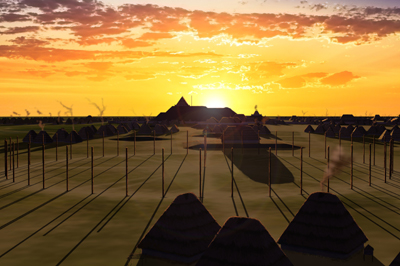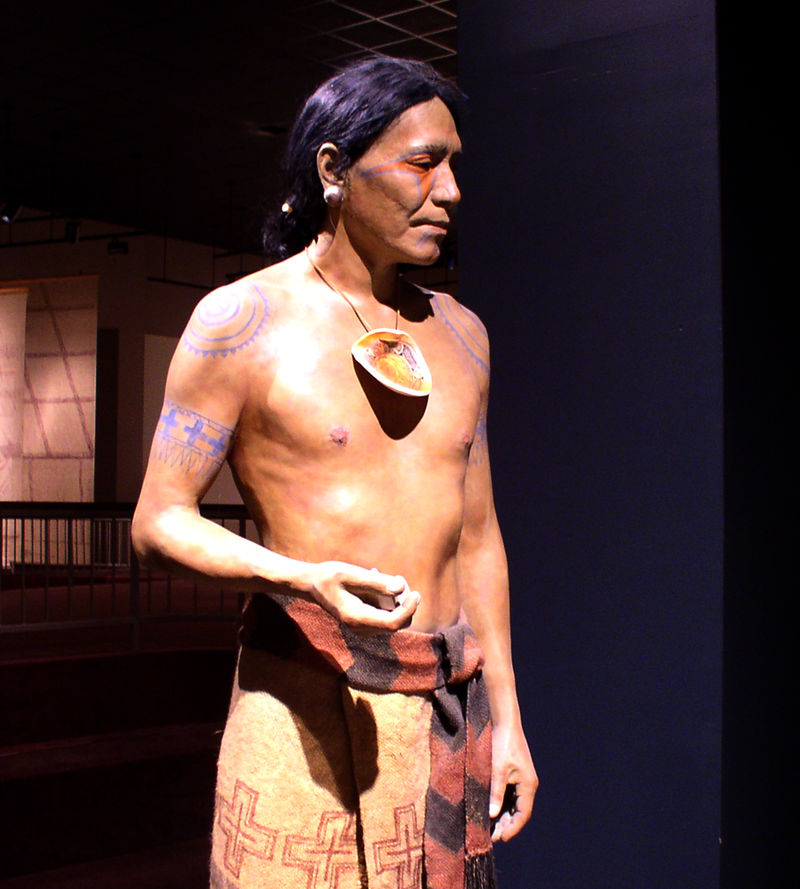It is interesting to note that when we refer to the pre-contact history of North America, we tend to think of the times fairly close to the portentous, not to say apocalyptic, 15th century. Whether the Great League of the Iroquois/Haudenosaunee in the northeast, or the Mississippians in the so-called American Bottom, or the Cliff Dwellers/Anasazi in the southwest, all those key-cultures that spring to mind first, span either allegedly close or only a few centuries back to the in/famous “discovery” time. Which of course isn’t accurate, to say the least.

Both oral history and archaeology of this continent tell a different tale. For instance, when we think of the Mississippians we would usually think of the Cahokian complex of mounds, with its greatest among the man-made earthworks of this continent towering over 100 feet height, sporting four terraces and an impressively extensive base. More than 50 other mounds of different sizes and purposes are dotting the site, many still under excavation or study, concealing their treasure of information.
And yet, Cahokia saw its highest point some time around the 12th century, which means that even if its official beginning considered at the 9th century, they must have had their ancient history of mysterious or known ancestors to talk about or maybe study, excavate of observe. Their mounds were certainly not the first erected in the valleys of the Mississippi and the surrounding rivers.
For one, what we known today as Hopewell culture existed in mid-west and northwards along its major rivers approximately between 400 BC and 300 AD, a good many centuries before the Mississippians of Cahokia and other notable sites began to form their complex societies, urbanize their surroundings and build their towering terraced mounds.

Hopewell earthworks are different. Their effigy-mounds must have been as impressive, mysterious animal-shaped earthworks, towering likenesses of birds of prey or animals that might have been considered sacred or otherwise ceremonially important, mounds in the form of lizards and turtles, of big cats, of giant water birds.
Not all effigy mounds that are found all over the mid-west and northeast are claimed to belong to Hopewell. Earlier Adena culture could also demand some credit. No one knows of the purpose of such giant yet impressively detailed constructions. Maybe they served as imposing territorial marks, or maybe they had ceremonial purposes for various sacred societies to hold their rituals and rites.
Besides the effigy mounds that may have been actually built by the Adena culture that preceded Hopewell in their turn, plenty of huge conical burial mounds mark Hopewell times as well, mounds rich in archaeological findings. Conch shells and shark teeth (probably from the Atlantic and the Gulf of Mexico), copper from Great Lakes and chert from North Dakota, obsidian from Black Hills and alligator skulls and teeth from Florida, freshwater pearls from mussels in Mississippi and Ohio rivers, and beautifully shaped ornaments and symbols made from mica (probably from Appalachian mountains) were buried along with persons of importance, suggesting an extensive trading net that even the later-day Mississippians didn’t seem to expand much further (besides the possible cacao trade with Mesoamerica some archaeological findings suggest).

So we can only wonder what the later-day Mississippians thought about those massive earthworks when many centuries later, reportedly around 1000AD, they had moved into the area and then gradually spread all over the mid-west, or what the archeologists call the American bottom. Had they considered those earlier mound-builders their direct ancestors, maybe reinventing their own ancient history like many prominent cultures reportedly did all around the globe? Or did they just revere those mysterious earthworks and took them as the part of the landscape, maybe something divine, maybe just useful for their own architectural purposes?
The questions that would probably never be answered as for us the Mississippians are as mysterious as for them the Hopewell or Adena mound-builders might have been.
To build an earthen monument of such magnitude the urban centers needed plenty of workers, planners and overseers to make it all function. The construction must have been progressing in continued stages, each supervised by those who understood the basics of engineering. The work itself could have been done mostly through summer and early fall, before the earth became frozen or rain-soaked. As mentioned before, the mounds usually took three major forms – more ancient effigy mounds, platform mounds for ceremonial purposes, and conical mounds for burials of important individuals, presumably the ruling class.

When the weather turned favorable and another earthwork was to be commenced, people would get to work, either willingly or having no choice. No firm archaeological evidence of slavery as a concept seemed to be found, even though it is clear that there must have been a strict class separation among the Mississippians as proved by those who might have been their direct descendants – Natches, Tunihkas, and other people of the Lower Mississippian valley.
First the earth had to be loosened and softened. Sturdy stone hoes hafted to poles, along with digging sticks routinely made out of deer antlers, must have helped to with this task, as did the shovels made of deer or bison shoulder blades, employed widely for digging.
Each load of earth made of many kilograms or pounds would then be loaded into tightly woven baskets, strapped to people’s backs and foreheads, to be carried more comfortably up the growing incline. Alongside those, other men must have carried greater burdens by putting those on stretched robes or litter-like constructions. Many hundreds of people had to be employed in digging and carrying, flattening and shaping the newly raising sacred earthwork.
Another aspect of such extensive digging was barrow pits that developed as a result of all those earth excavations, huge depressions in the ground that gradually filled with water and became artificial ponds, attracting water fowl and birds, forest dwellers and insects, filling with fish and other water creatures, turning into reservoirs for the city dwellers to rely upon besides the regular fields and other agricultural production.
Such thriving urban centers spread throughout the Mississippi and Ohio rivers, and all around the southeast, spreading along North American riverways with lively trade and probably other sort of communication and contacts, not always peaceful judging by the stockade walls most of those centers sported.
Comments on Facebook
Comments
No Comments to “The Ancient History of the Ancients – who was there before Cahokia?”